Rome: organization of the republic
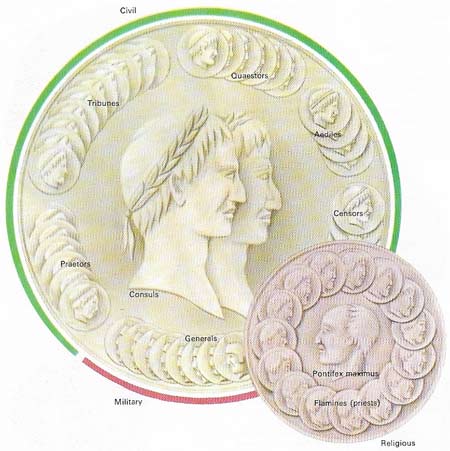
Figure 1. Most of the civil officers of Rome (in the green band) had legal functions as well as administrative. The generals had military responsibilities only. The pontifex maximus was head of the state religion.
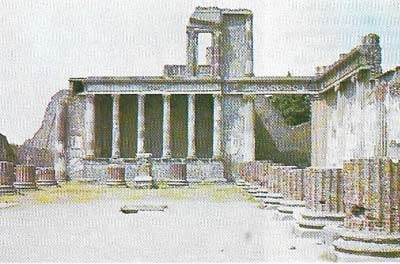
Figure 2. The basilica at Pompeii, measuring 56 by 21 meters (185 by 70 feet), was built in the 1st century BC and was the center of economic life. Most Roman cities had one of these rectangular roofed halls where business transactions were concluded. They generally stood near the Forum. Some basilicas included arcades and galleries and their design influenced later Christian basilicas.
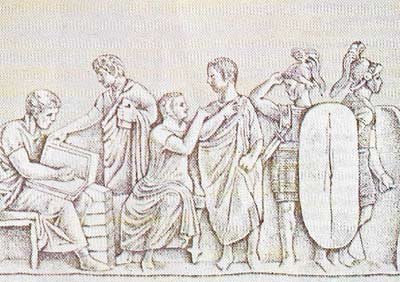
Figure 3. The demobilization of Roman soldiers is portrayed on this relief (c. 1st century BC). The scribe on the left takes down details from a discharged soldier who holds his certificate, while others wait their turn.
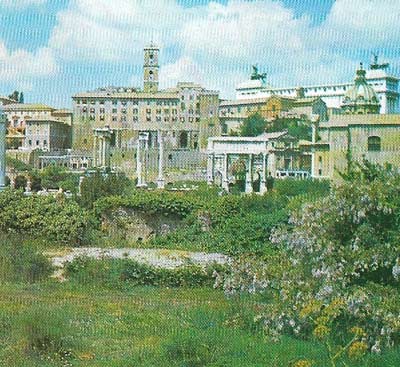
Figure 4. The tabularium or record office (center left) was built in 78 BC to the plans of Sulla (138–178 BC). It housed the state archives and was probably an annex of the Treasury. The upper part is a palace (c. 1500).
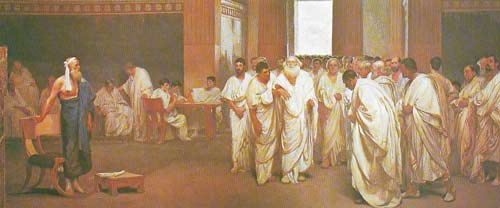
Figure 5. The Senate was the principal advisory body of Rome. This 19th-century painting by Maccari shows Appius Claudius persuading the Senate to reject peace proposals from Pyrrhus of Epirus in 280 BC.
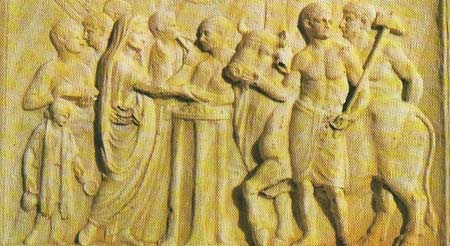
Figure 6. In the Temple of Vespasian at Pompeii there are sacrificial scenes on an altar dedicated to the Roman imperial cult. Ritual sacrifices of animals such as pigs, sheep, and bulls were an ancient element in the complex of Roman cults. Their purpose was to encourage divine beneficence.
Republican Rome (509–27 BC) is often regarded as a democratic state. Certainly later Roman writers looked back nostalgically on what seemed a golden age of political and social order and agreed morality. There was a theoretical balance between the powers of the magistrates, the Senate, and the plebeians. But in fact most of the early republican period was an age of bitter conflict between the nobles of the Senate, anxious to keep their privileges, and the plebeians, equally anxious to have a share of the benefits. It was not until the third century that the plebeians were able to make laws on their own account. Their admission to all the magistracies only created an alliance of the nobility and rich ambitious plebeians, forming an oligarchy as exclusive as the former patrician nobility had been in earlier years.
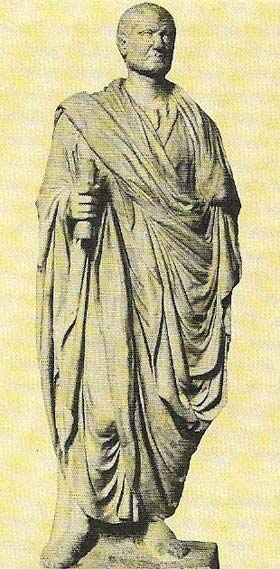 |
>
| The magistrates of Rome had great power and influence. Civil lawsuits were heard first by a magistrate, such as the one shown here, before going to a judge for settlement. In the late republican period criminal cases were tried before special courts, where the penalties were generally exile, loss of citizenship or hard labor. The most important achievement of the Roman legal system was the classification of its code in order to clarify citizens' rights. The laws were published in 450 BC at the instigation of the plebeians. The body of Roman law, many of the principles of which are still very much in use, has had a vast influence in the West. |
The political structure of the republic
The Senate and the conciliurn plebis (people's assembly) formed the legislative branch of the republic and the magistrates (Figure 1) the executive. The 300 senators (Figure 5) were chosen from ex-magistrates by the censors (those who watched over public morals). The Senate was basically an advisory body with overriding financial control. It initiated legislation and in practice made the vital decisions on war and peace and foreign policy in general. It also assigned provinces to senior magistrates at the end of their year of office. The concilium plebis, which represented the plebeians, was able to initiate legislation, its resolutions having the force of law after 287 BC, but in general it merely accepted or rejected proposed legislation.
The chief executives during the Roman Republic were the two consuls. They were elected (from candidates proposed by the Senate) by the comitia centuriata, an assembly in which wealthy citizens had disproportionate voting strength. The consuls had immense power, presiding over the Senate and acting as supreme commanders in war. Beneath them were the praetors, whose numbers varied from two to eight and whose main duties concerned the administration of the law. Four quaestors were in charge of the state finances. The two censors supervised state contracts and public morals and, during the late republic, checked and if necessary expelled members of the Senate.
Streets, temples, public works, the grain supply, and the public games were the responsibility of individual aediles. Twelve lima preceded consuls and two preceded praetors, clearing the way and carrying bundles of rods known as fasces. The ten tribunes were entrusted with the defense of the plebeians, having the power of veto against actions of magistrates and against laws. In the 2nd century BC the tribunes became entitled to sit in the Senate.
The power of the consuls
At the end of their year of office the imperium (power) of the consuls and praetors was transferred from Rome to one of the provinces. The Senate decided which provinces should he consular and which praetorian; to avoid corruption this decision was taken before the election of the magistrates. The actual province each magistrate received was decided by lot. Imperium did not extend beyond the province's boundaries, as was shown when Julius Caesar, by crossing the Rubicon in 49 BC, in effect declared war on the Senate. Governors might keep their provinces for only one year or by prorogatio might have their command extended.
The most important religious figure was the chief priest, the pontifex maximus. He was the elected head of the college of priests, which also included the vestal virgins (who kept the sacred fire burning in the Temple of Vesta) and the flamines, each of whom was responsible for the cult of one of the gods. Outside the college were the augurs who from certain signs, such as the behavior of birds, decided whether a certain course of action was advisable.
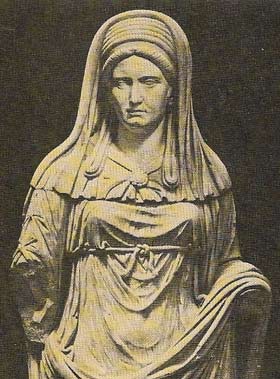 |
>
| The six Vestal Virgins lived in the House of the Vestals in the Forum. They began their service as children and could return after 30 years. If they allowed the sacred fire to go out they were whipped by the pontifex maximus under whose authority they came. |
The Romans worshipped many gods, most of them originally Greek. The chief god was Jupiter, to whom a temple was founded on the Capitol at the time of King Tarquinius Superbus (reigned 534–510 BC). Religious festivals were held throughout the year (Figure 6), among the most important being the Lupercalia, held on the Palatine on February 15th, and the Saturnalia on December 17th.
The security of the republic and its steady expansion into a great empire depended on the discipline and courage of its army. The record of victories over powers as formidable as Carthage, Macedonia, and Syria was remarkable considering that it was still a citizen militia summoned by the consuls to meet specific emergencies. Only citizens with certain property qualifications were eligible, although an equal number of allies also served. Clearly the quality of commanders and centurions must have been high. Not until the reforms of Marius (157–86 BC) was a professional volunteer army formed.
Taxation and tax-collecting
Most Roman taxation was indirect and included customs duties and a number of special taxes, such as that on the freeing of slaves. The tributum, a direct tax, was levied mainly in time of war. The censors decided which taxes were applicable to the various classes, while the quaestors administered their collection. But more and more, tax-collecting in the provinces was farmed out to publicani. They were closely associated with the wealthy equites, the second social class, who waxed fat on the proceeds.
